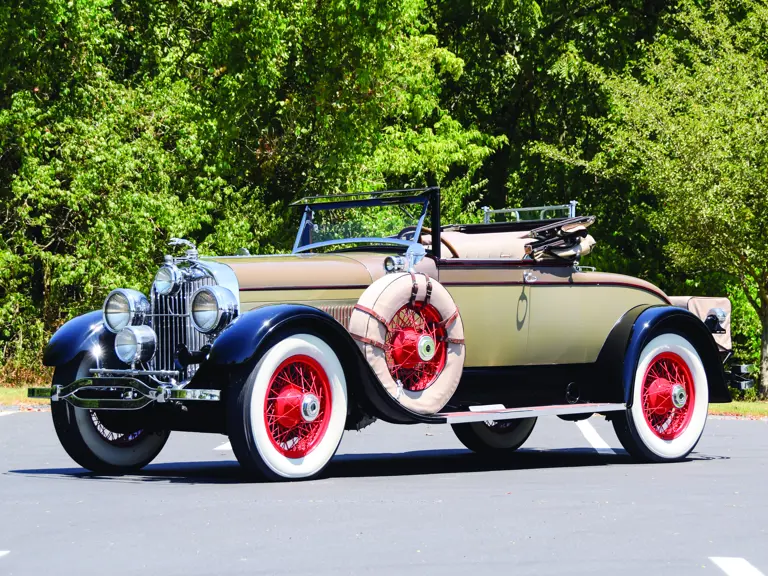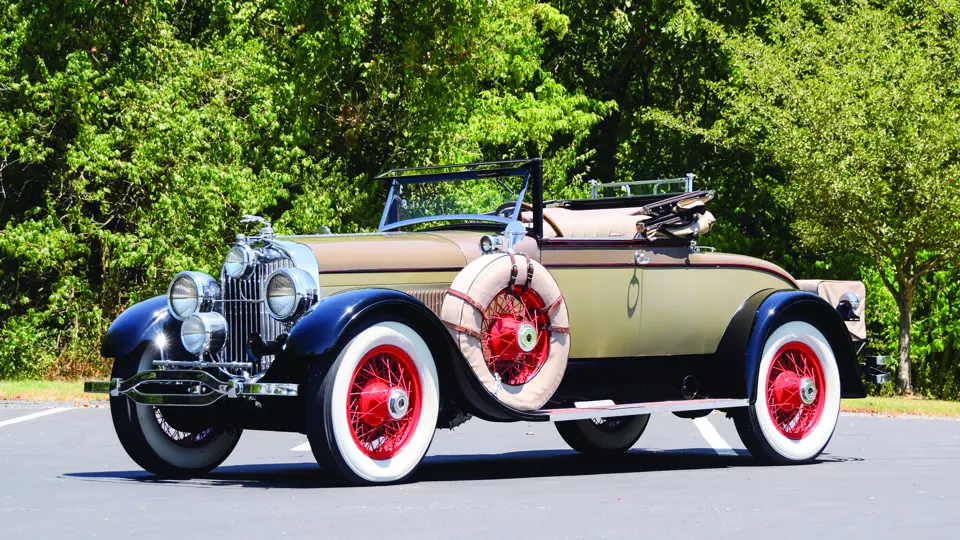Henry M. Leland may not be a household name in the same way that Henry Ford is, but his influence on the American automotive landscape is no less important and far reaching. A machinist and inventor who learned tool making in the firearms industry, he was at the leading edge of automobile development at the turn of the 20th century. During his time running the Leland and Faulconer Manufacturing Co. he supplied engines for Ransom E. Olds. He also, incidentally, invented the electric barber’s clipper!
In 1902, Leland was brought in to the Henry Ford Company to appraise their assets prior to liquidation. Leland complied but suggested they reorganize and build a car based on an engine Leland supplied to Olds. The new company was called Cadillac and they set to work building some of the finest early motorcars available. Leland applied many of the lessons he learned in the firearms business to the automobile, most importantly, the use of interchangeable parts. Leland sold Cadillac to General Motors in 1909, but remained in charge. He headed the development of the electric self-starter alongside Charles Kettering in 1912. A dispute over the production of Liberty Aircraft engines led to his departure from Cadillac in 1916, and his subsequent founding of another great American luxury marque – Lincoln.
The Model L was Henry Leland’s first model since he formed Lincoln Motor Company following his contentious departure from Cadillac. Introduced in 1917, the Model L was designed by Leland’s son-in-law, Angus Woodbridge who, curiously, was trained as a ladies hat maker. In spite of Mr. Woodbridge’s unconventional training, the Model L was a fine car, if perhaps viewed as a bit old-fashioned in its day. Financial troubles hit the company hard during the post-World War I recession, and in 1922 Leland sold Lincoln to Henry Ford for $8 million. Ford immediately displaced Leland and Woodbridge, and assigned his own son Edsel to head the new division. Edsel, unlike his father, understood the importance of style on a high end automobile and he designed a new body for the L-series, and improved handling with the addition of hydraulic shock absorbers. They also streamlined the production process, saving vast amounts of money and turning Lincoln into a profitable business in less than a year.
By 1925, the robust L-Series was restyled again with a new nickel-plated radiator shell. The 90 horsepower V-8 and three-speed transmission remained and the car sold well, offered in a variety of body styles. This featured example is from 1925 and is dressed in a rare and attractive convertible coupe body by LeBaron. It is finished in a unique tri-tone scheme, with medium khaki body sides, darker hood and accent lines, and black fenders and swage lines. The colors are accented with red pinstripes and red wire wheels, giving a fun and sporting appearance.
This Model-L wears a very well preserved older restoration featuring an array of fantastic period accessories. Body lines are very good, and the high quality LeBaron convertible coupe body exhibits excellent fit and finish for the period, however the paint is just starting to show some age. Starting at the front end, it wears nickel plated Drum headlights, a badge bar-mounted drum spotlight, and a very rare OWL accessory light mounted high on the radiator shell. Whoever the heroic original owner was in 1925 must have enjoyed high-speed motoring at night! Atop the nicely restored radiator sits the famous Lincoln Greyhound mascot. Moving back, you find drum cowl lights, dual side mount spare tires with mirrors, an opening windscreen and body side golf-bag door. Rumble seat passengers are treated to their own folding windshield to ensure their comfort and a covered trunk sits out back on a folding rack. The LeBaron designed body is very stylish and well-proportioned with a long, tapering rear deck and it wears the accessories well without appearing overwrought.
The cozy cockpit is trimmed in period appropriate cloth which presents in good condition, showing little wear since the restoration was completed. Wood on the dash, door caps, and steering wheel are all in good order and the original instrumentation is all intact and attractive. The rumble seat is trimmed in brown leather, which would be correct for the period, as it was harder wearing and more likely to see weather.
The flat head 90 horsepower V-8 engine is very nicely presented in correct grey paint on the heads and cylinders. Polished hardware, correct clamps, and painted accessories round out the detailing. The engine is mated to a three-speed manual transmission which is strong and easy to operate. With lots of interesting accessories, a very rare and desirable LeBaron body and a quality restoration that has been very well maintained, this Lincoln L is sure to charm its next owner.



 | Auburn, Indiana
| Auburn, Indiana


